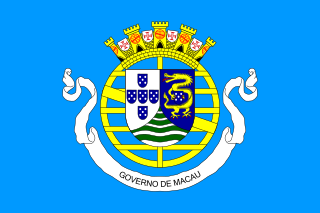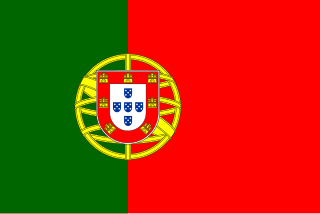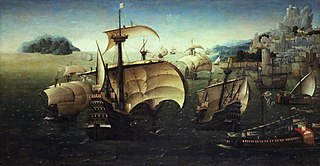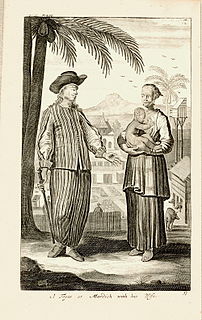 W
WThe Portuguese Empire, also known as the Portuguese Overseas or the Portuguese Colonial Empire, was composed of the overseas colonies, factories, and the later overseas territories governed by Portugal. It was one of the longest-lived empires in European history, lasting almost six centuries from the conquest of Ceuta in North Africa in 1415, to the handover of Portuguese Macao to China in 1999. The empire began in the 15th century, and from the early 16th century it stretched across the globe, with bases in North and South America, Africa, and various regions of Asia and Oceania.
 W
WChittagong, officially Chattogram, is a major coastal city and financial centre in southeastern Bangladesh. The city had a population of more than 8.6 million in 2017, making it the second-largest city in the country. It is the capital and administrative seat of an eponymous District and Division. The city is located on the banks of the Karnaphuli River between the Chittagong Hill Tracts and the Bay of Bengal. Modern Chittagong is Bangladesh's second most significant urban center after Dhaka.
 W
WThe Fort of São Tiago of Banastarim in India, also known as Fort St. James Banastarim or Benastari Castle, is located at on the right bank of Cumbarjua Canal, on the eastern tip of Old Goa, North Goa district in the state of Goa on the west coast of India.
 W
WPortuguese Macau or Macao covers Macau's history from the establishment of a Portuguese settlement in 1557 to the end of Portuguese colonial rule and transfer of full sovereignty to the People's Republic of China in 1999. Macau was both the first and last European holding in China.
 W
WPortuguese control of Malacca, a city on the Malay Peninsula, which was a possession of the Portuguese East Indies for 130 years (1511–1641). It was conquered from the Malacca Sultanate as part of Portuguese attempts to gain control of trade in the region. Although multiple attempts to conquer it were repulsed, the city was eventually lost to an alliance of Dutch and regional forces, thus entering a period of Dutch rule.
 W
WThe Kingdom of Ormus was located in the eastern side of the Persian Gulf and extending as far as Bahrain in the west at its zenith. The Kingdom was established by an Omani prince in the 11th century initially as a dependency of the Kerman Seljuk Sultanate, and later as an autonomous tributary of the Salghurids and the Ilkhanate of Iran. Ormus later became a client state of the Portuguese Empire, most of its territory was eventually annexed by the Safavid Empire in the 17th century.
 W
WThe Portuguese conquest of Goa occurred when the governor of Portuguese India Afonso de Albuquerque captured the city in 1510. Goa was not among the cities Albuquerque had received orders to conquer: he had only been ordered by the Portuguese king to capture Hormuz, Aden, and Malacca.
 W
WThe State of India, also referred as the Portuguese State of India or simply Portuguese India, was a colonial state of the Portuguese Empire founded six years after the discovery of a sea route to the Indian Subcontinent by the Kingdom of Portugal. The capital of Portuguese India served as the governing centre of a string of Portuguese fortresses and settlements scattered along the Indian Ocean.
 W
WThe Portuguese Indian Armadas were the fleets of ships funded by the Crown of Portugal, and dispatched on an annual basis from Portugal to the Indian subcontinent. They were sent principally to colonial capital in Portuguese Goa and other colonial settlements such as Damaon and Cochin. These armadas undertook the Carreira da Índia, following the maritime discovery of the Cape route to the Indian Subcontinent by Vasco da Gama in 1497–1499.
 W
WPortuguese Timor refers to East Timor during the historic period when it was a Portuguese colony that existed between 1702 and 1975. During most of this period, Portugal shared the island of Timor with the Dutch East Indies.
 W
WSt. Paul's College of Macau also known as College of Madre de Deus was a university founded in 1594 in Macau by Jesuits at the service of the Portuguese under the Padroado treaty. It claims the title of the first Western university in East Asia.
 W
WThe siege of Anjadiva in 1506 occurred when the Muslim ruler of Goa fought to expel the Portuguese from the Fort Anjediva they had established there. Adil Shah of Bijapur was the invader. This, combined with other reasons, forced the Portuguese to leave the settlement.
 W
WThe Siege of Calicut occurred in 1526, when the Zamorin, the local Indian ruler, captured the fort of Calicut from the Portuguese.
 W
WThe Siege of Cannanore was a four-month siege, from April to August 1507, when troops of the local ruler, supported by the Zamorin of Calicut and Arabs, besieged the Portuguese garrison at St. Angelo Fort in Cannanore, in what is now the Indian state of Kerala. It followed the Battle of Cannanore, in which the fleet of the Zamorin was defeated by the Portuguese.
 W
WTopasses were a group of people led by the two powerful families – Da Costa and Hornay – that resided in Oecussi and Flores. The Da Costa families were descendants of Portuguese Jewish merchants and Hornay were Dutch.
 W
WThe Treaty of Zaragoza, also called the Capitulation of Zaragoza was a peace treaty between Castile and Portugal, signed on 22 April 1529 by King John III of Portugal and the Castilian emperor Charles V, in the Aragonese city of Zaragoza. The treaty defined the areas of Castilian and Portuguese influence in Asia, in order to resolve the "Moluccas issue", which had arisen because both kingdoms claimed the Maluku Islands for themselves, asserting that they were within their area of influence as specified in 1494 by the Treaty of Tordesillas. The conflict began in 1520, when expeditions of both kingdoms reached the Pacific Ocean, because no agreed meridian of longitude had been established in the Orient.
 W
WYokoseura (横瀬浦) is a port located at the northern tip of the Nishisonogi Peninsula on the Japanese island of Kyushu, administratively under Saikai city, Nagasaki Prefecture. It was developed as an entrepot by the Portuguese in 1562 with the permission of the local lord Ōmura Sumitada, but was burned down a year later during a rebellion against Sumitada.